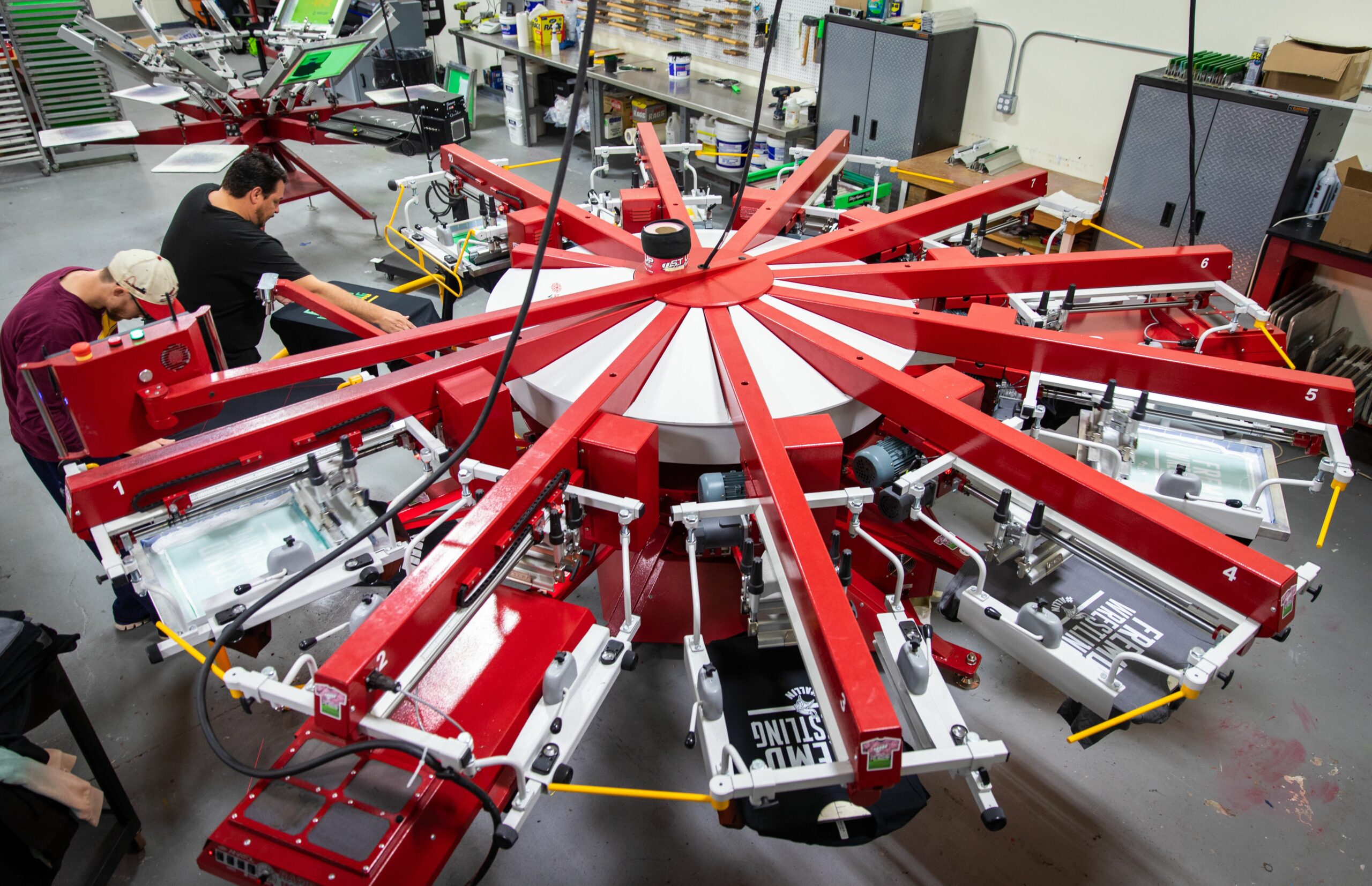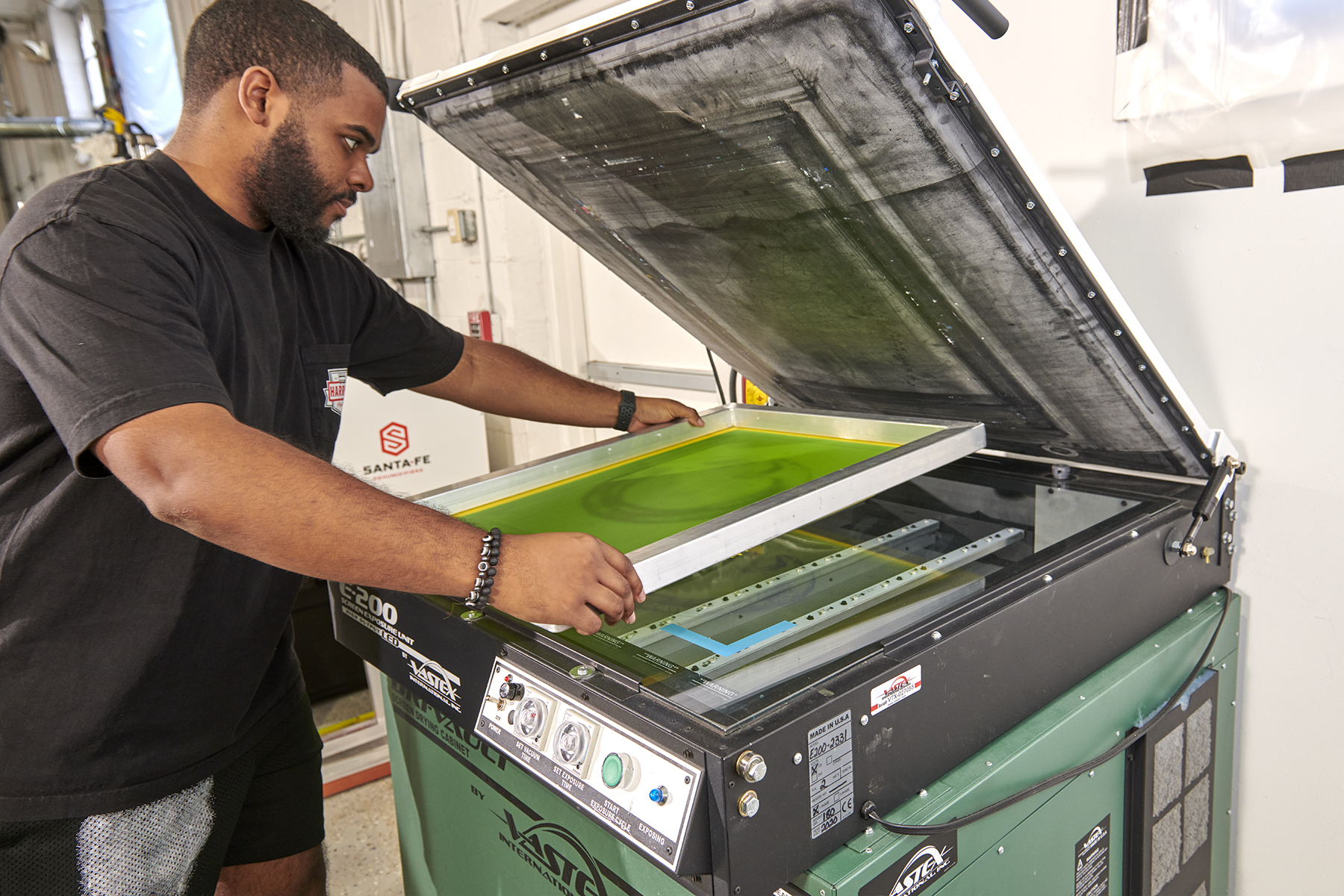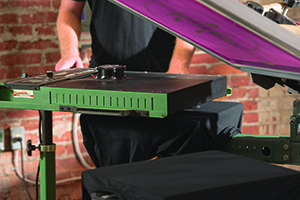July 8, 2013
For the uninitiated, hot-market printing is the term used in the apparel industry for contract printers who take on the stressful, and often large, T-shirt printing duties after a sports team wins a championship. Larger players in this field can’t keep up with the demand, or they want to save time and freight by contracting the print job to several printers in the geographical area of the fanbase. Average orders for these events are usually between 10,000 and 50,000 units and are dominated with shirts on white, black, sport grey or one of the team’s colors.
In my years in this business, I’ve managed Super Bowl, World Series, Stanley Cup, and collegiate football and basketball hot-market printing. The sports may be different, but the stress levels and challenges have been the same. If you are thinking about getting into this service, or maybe you already have one or two of these under your belt, this article offers tips for you to pull off a successful print run.
Organization
The key to a successful hot-market printing event is to understand the logistics of what your client is contracting you to do and how it will dramatically impact your current slate of in-house orders. Can you get ahead of your schedule so you can drop the hot-market orders into the rotation without missing a beat with your normal customers?
1. Hot market printing is all about getting shirts printed and into stores as quickly as possible. Some companies will have you print and go directly to stores, while others will have your shirts go to their distribution center. There is tremendous pressure to get shirts out and selling quickly. If the rep tells you that the first pick up is at 2 a.m., the truck will be there at 1 a.m., maybe sooner. If you are organized and have a great crew, hitting these deadlines won’t be a problem. Setting clear expectations with your staff and having everyone understand what’s going on is the key to getting things handled correctly — and early.
2. Have each press pre-organized with inventory on skids ready to go. Leave them boxed up, as it doesn’t take but a few minutes to load the initial shirts on carts or a table for printing. Have each press’s inventory clearly labeled so anyone can pull it to position.
3. There may be some post-production work to be done, such as adding hologram stickers to every shirt or packing out the shirts into size ratios. These tasks are equally as important to the success of the work as printing the shirts. For the hologram stickers, instead of handling that after the printing, just have someone stand on the side of the dryer belt and add them as they come down to the catcher. If you are packing into size ratios, you may need to catch the shirts in fours, rather than in dozens. Make sure your team knows and understands that.
4. After printing, your pickups need to be organized so that they are ready well before the designated times. Have your presses loaded with first runs, and double count everything and stage it for pickup. Have a trusted, veteran staff member review the numbers and sign off on each. For pickups, make sure you get a photo ID and signature of each driver for your records and keep everything organized with what left your building with actual times. Have each pickup separated and clearly labeled. Box counts and packing slips are a must, and your customer may dictate what those look like and what’s needed. Have someone that is good with paperwork entrusted to work on this task. You will need copies of everything. If there are any discrepancies later, these will be your proof you did what was expected.
5. Review the artwork thoroughly to check for any problems as soon as you receive it. These files may be digital, but more often than not they will be sent to you as films. They probably will be perfect, but over the years, I’ve seen some that had problems. Have someone review and look for potential issues before burning your screens. The most common problems are copyright and trademarks being left off, or underbase plates not being prepared properly. If you have time, print a sample of each design a few days before the event if you think something may not work. You don’t need the stress at midnight when you realize that the client’s separations aren’t right.
Labor
Your people will make all the difference for this event. After all, the work doesn’t get handled by itself. Make sure you are clear with your instructions and expectations. Here are some tips:
6. Use a chart and build your employee press assignments so everyone knows where they will be working and what time to arrive for work. If your hot-market event is to print for either team, that’s the best situation, as you can just have everyone come in at a designated time a little before the game ends. If you are printing only if one of the teams wins, either pay everyone to come in anyway at a certain time or state explicitly to pay attention to the game and come in directly after your team wins. The earlier everyone arrives, the better. Have a chart with everyone’s cell phone numbers just in case.
7. Make sure your management team knows to be the first ones at the shop. There may be some confusion or a challenge that needs to be handled and you want the brain trust in place early.
8. If you don’t normally have a second shift for printing, running your crews all night can be difficult. Make sure you are clear when the breaks will be, and you can even plan on bringing in refreshments (such as coffee) to make them feel appreciated. One trick is to bring in relief crews early in the morning (like 4 a.m.) to take over. This keeps your momentum going and prevents unnecessary mistakes that occur when weary workers stop focusing on details.
9. For non-skilled work, such as adding hologram stickers, building boxes, etc., think about bringing in other folks from your company to help. Sometimes, it really illuminates the labor-intensive tasks in production for customer service reps, salespeople or accounting when they share the workload with fellow staff members. I’ve also used temporary workers from an agency (and they work great), but nothing beats building the “all-in-this-together” camaraderie like pulling an all-nighter.
10. If you have a lot of local interest in the outcome of the game, you may consider hosting a non-alcoholic tailgate party at your shop with your staff to watch the game together. Primarily, this gets your crew in the shop early so you don’t have to worry about stragglers, but it also helps curb any issues with staff partying a little too much during the game and then coming to work. I’ve talked to reps with hot-market companies, and they have seen their share of printers that have had issues with inebriated employees. Don’t let this be you. Be a leader and talk about this with your staff so they know your expectations.
Client Relations
Your customer may have someone (or even a whole crew) on site to oversee production. This is normal. Here are some thoughts:
11. All hot-market contractors will give you a spreadsheet with what they need printed. These usually are broken up into the designs they need printed and the time that the freight pickup will occur. These are often in two-hour increments, starting at 2 a.m. Accompanying the spreadsheet will be color proofs with color call-outs for each design so you will know what design can be printed on each press.
12. Most contracts have, as their base, the number of presses that the customer is contracting to use, with impression speeds usually calculated at 300-350 per hour. There also should be language regarding defect and misprint percentages. Essentially, what they are paying you for is for you to have your crews ready to go as soon as the game is over. All presses should be ready to print, with screens registered, shirts pulled and everything perfect. If your team loses and you are not printing, they will pay you for your effort to be on call and the work you put into setting up and being prepared.
13. The company will send you the shirts to print. Do yourself a favor and check these as soon as they arrive for quantity, color and size. I’ve had more than one hot-market printing job where the shirts that were shipped were the wrong color. Don’t wait until print day to discover that the 10 skids of black shirts are actually green. Most companies will send you several thousand more shirts than what will be on the initial order, as they want to be optimistic about adding sales later. Make sure your counts for each size and color are accurate.
14. Designate one person to be the liaison between your company and your hot-market customer. This person will need to check and review everything up to the print event. During the printing, this will be the go-to person for questions. During the event, if the customer doesn’t have an on-site staff member, your employee will need to be available by cell phone and have access to all of their order information.
Odds & Ends
Here are some final thoughts to make your print event go smoothly:
15. Make sure you have enough ink on hand, especially if the design uses a metallic variety. White and black are pretty common, but you should check your stock level for all colors several days before the event. This means you have to physically go and look.
16. Either have someone from the screen room available to come in with the print crews, or have extra screens burned “just in case”. You don’t want a 3 a.m. disaster if a screen rips and you are down. Have a backup plan prepared.
17. For optimal results, have the presses ready with the screens registered long before the game starts. That way, as soon as the game ends, you can be printing. You absolutely do not want to be in a position where you are waiting for a press to get ready, and your workers are struggling with a registration or art issue.
18. Some companies use contract printers as their secret weapon. So before you call the TV station and get the remote crew to film you printing for the big game, make sure you clear it with your customer first. Also, be wary of posting shots of the designs on your social media pages for the same reason. Your customer is essentially renting your company for the event, so it’s really the customer’s call. Don’t be offended if the answer is no.
19. You may need to discuss if it is OK with your customer for your employees to receive a shirt. Some may have tighter controls over their inventory and will say no. Most see it as a perk for working all night and will lump it in with their misprints that are already factored into the job. Talk about it before hand and get the ruling before you have a situation.
20. Lastly, be sure to personally thank each crew member that helps you. Pat them on the back, shake their hands, smile and say thank you. During the event, walk around and talk to people. Keep the enthusiasm up. Joke and be happy. People need to be appreciated and a sincere thank you goes a long way.
Hot-market printing is fun and also financially rewarding. I’ve found it to be much more exciting than regular orders, as there’s some uncertainty to it. There have been plenty of instances where our crews are all gathered in the breakroom watching the game, not knowing if they are going to work or not, and the right team scores late in the game to win. Knowing that everything is ready to go, and that all we need is that one score is a good feeling. Hopefully, you can share that excitement too.
Marshall Atkinson is the chief operating officer of Visual Impressions Inc., and Ink to the People, Milwaukee. Atkinson has lectured on sustainability at ISS trade shows, and webinar industry panel discussions regarding the Consumer Product Safety Improvement Act (CPSIA). For more information or to comment on this article, email Marshall at matkinson4804@gmail.com or follow him on Twitter at @atkinsontshirt.
March 20, 2024 | Production
As with pretty much any business, one of the keys for apparel and T-shirt decorators running a successful custom screen-printing shop is having the right equipment, first and foremost, the right press, or presses.
FULL STORY
March 15, 2024 | Production
As is the case with flash units and dryers, screen exposure units, computer-to-screen-systems and washout booths are critical to successful screen printing of T-shirts and other apparel
FULL STORY
January 16, 2024 | Production
Go to any industry trade show or visit an actual custom apparel screen-printing shop, and your eyes will naturally be drawn to the press, or presses there. This is true whether the shop in question employs a single manual press or is running multiple autos.
FULL STORY



